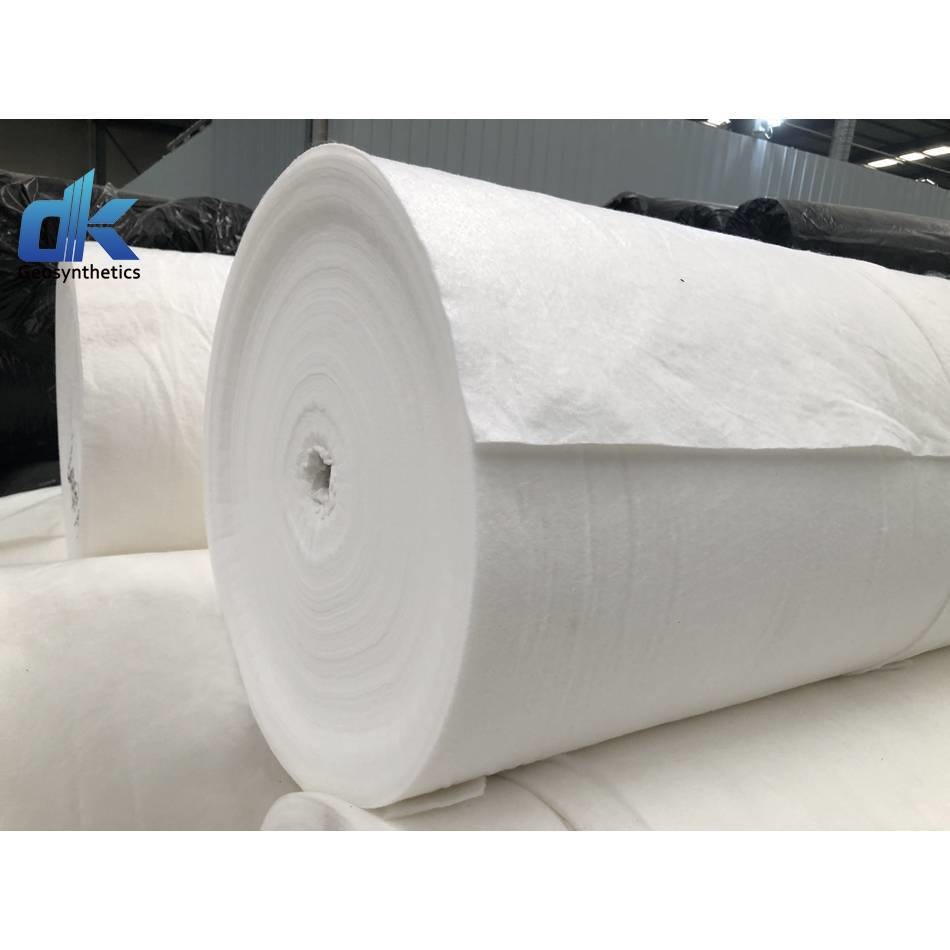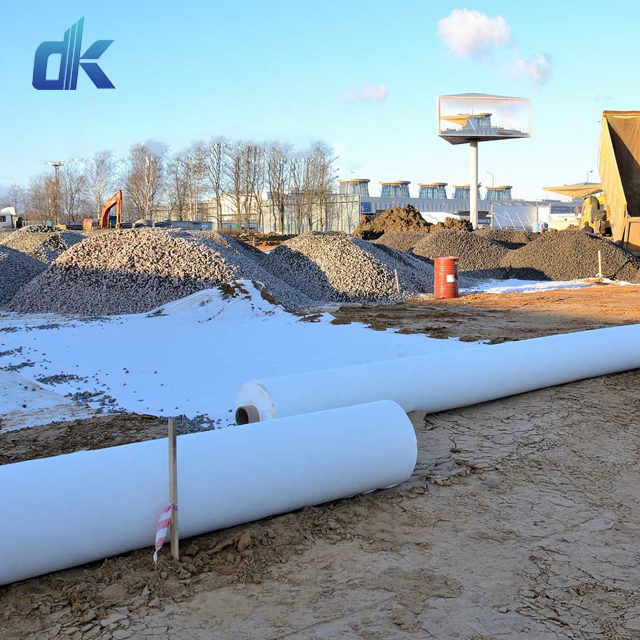
Geotextile, also known as geotextile, is a permeable geosynthetic material made of synthetic fibers by needle punching or weaving. The general width is 4-8 meters, and the length is 50-500 meters. Geotextiles are divided into woven geotextiles and non-woven filament geotextiles. Geotextiles act as permeable barriers, allowing water to pass through while preventing soil and other materials from passing through.
Lightweight geotextiles (3 oz to 5 oz) are used as filter fabrics in underground drainage applications. In addition to drainage, lightweight nonwoven geotextiles are often used as landscape fabrics, weed barriers, or lightweight dividers under pavers. Medium weight geotextiles (7 oz to 10 oz) are typically used for erosion control and separation/drainage applications. Heavyweight nonwoven geotextiles (10 oz to 16 oz) are commonly used as geomembrane pads, placed over or under the geomembrane to prevent it from being punctured.
The role of geotextiles:
1: Isolation
2: Filtration (reverse filtration)
3: Drainage
4: Reinforcement
5: Protection
6: Anti-puncture
